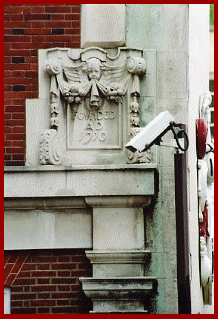| ||||||||||||||||||||||||||||||
Welcome to the | ||||||||||||||||||||||||||||||
 | ||||||||||||||||||||||||||||||
 | ||||||||||||||||||||||||||||||
If you need to handle | ||||||||||||||||||||||||||||||
| ||||||||||||||||||||||||||||||
The next logical step up from a PIP unit, is the Quad Display Multiplexer. As its name suggests, this device will split a screen into four quarters, and insert a complete compressed image into each quadrant. The picture quality does vary depending on the manufacturers choice of internal components and design, but a good high resolution unit, can provide an amazingly useful, and indeed flexible piece of kit. One particular varient is known as the ‘Duo-Quad’, which again splits the screen into four equal quadrants, but will accept eight cameras that can be displayed as two seperate ‘pages’ , each of four images. As you would expect, any of the cameras may be ‘pulled up’ full screen, either manually or by external alarm input. In addition, some better quality units will also incorporate a basic form of motion detection, so if movement is sensed in a particular quadrant, again that picture will instantly expand to fill the monitor screen. It is also normal for this type of device to allow some basic form of captioning, to identify individual cameras, although not all models provide this feature. The units are particularly useful for providing ‘group displays’ of sector cameras on a control room monitor, or as an entry level method of reducing the number of monitors required to provide security in commercial premises; other applications include use as a scientific research tool, particularly where a number of cameras are set up to provide comparative angles of the same target, which can then be filmed in real time for later analysis. As with the PIP units, any recordings made will generally not allow the individual quads to be brought up full screen on replay, although the odd one or two units that do offer this facility, do so with a particularly poor picture quality. This is because when the image is compressed down to a specific pixel density, any attempt to reconstiitute this display full screen, means that although the pixel count stays the same, the individual pixels become intrusively larger (i.e. they are four times bigger than when compressed). If full screen replay from recording is required, then a four channel recording multiplexer should be used. | ||||||||||||||||||||||||||||||
 | ||||||||||||||||||||||||||||||
IMPORTANT: No material may be reproduced, copied or redistributed from this site, © doktorjon.co.uk 2004 - 2008 Homepage...:...Gateway...:...Technical Gateway....:....Quickfind Index....:....Equipment Directory | ||||||||||||||||||||||||||||||

